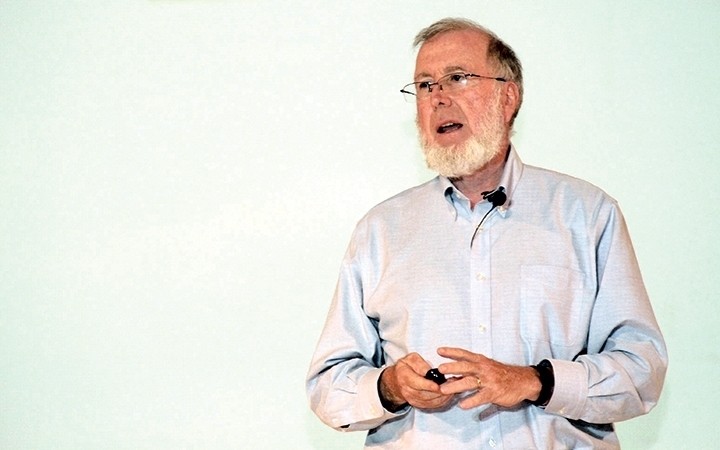
The internet, once seen as separate place where people could congregate called cyberspace, continues to redefine real-world commercial relationships.
As co-founder of Wired, the technology magazine that had the good fortune to be born at the same time as the world wide web, Kevin Kelly has watched this transformation from a ringside seat.
“This digital world we’ve invented, the world of the web, is just an infant,” he remarked, as the closing keynote for this year’s Asia-Pacific Media Forum in Bali.
“It’s only a few thousand days old,” he added. “Everything has happened in a very short space of time.
“What’s going to happen, in the next few thousand days, will make everything that’s happened already seem like nothing.”
Some trends taking shape today offer clues as to what the next phase of development, with its own ways of distributing content and information, will look like.
Already apparent is how screens of all sizes are becoming increasingly common, from screens people own to others they encounter wherever they go, from the mall to the office to the gas station.
We are getting accustomed to interacting with screens, but soon we may have to get used to screens interacting with us, Kelly pointed out.
Eye-tracking software is getting better at detecting people’s moods, working out whether someone is engaged or distracted, confused or annoyed.
“These screens can adapt,” Kelly explained. “If you are reading something you don’t understand, it will know and expand on that, or it can give recommendations based on where you are most engaged.”
Economic and political factors will still determine where and how fast these new technologies roll out, but screens will proliferate, becoming the dominant medium for content and advertising over time.
Portable versions, such as mobile phones or tablets, can also bridge the gap between the virtual and the physical worlds by adding content or information to objects viewed through the screen, so-called augmented reality.
“The digital world is not separate,” Kelly said. “This is what we were wrong about. People imagined this digital world we entered into and got lost in.
“This new economy we’re heading into is really about convergence, embedding information in the physical world.”
Electronic chips are already being integrated into a variety of different objects, from cars to shoes, to the extent that intangible assets from design to digital software are becoming more expensive than the physical product.
As more objects are embedded with chips, they become interactive data engines in their own right, relatively limited as separate components but a rich source of information when networked together, forming what has been called the semantic web or the internet of things.
This marriage of the physical and virtual is laying the foundations for a new media and a new economy.
At the same time, swelling data volumes are forging new ways to present information. The original computing paradigm of files and folders that could be viewed on a desktop – familiar territory to anyone who has worked in an office – has been replaced by the web, which uses publishing terminology instead, of pages connected with links.
“Now we’re moving into a third organizing metaphor that’s no longer about pages,” Kelly said. “It’s all about streams and flows and the cloud, this larger super network of devices that everything is connected to.
“These streams are RSS feeds, Twitter streams, Facebook walls, CNN streams, Netflix streams. They are not permanent, they are not fixed, they are not pages; they are just data flows.”
These ever-changing currents of information will be personal as well as commercial.
Another side effect of the internet age that took people by surprise is how much private data people are willing to share, Kelly noted.
The amount of personal information they reveal will increasingly dictate the degree of personalization they can expect from companies and institutions.
This world of ubiquitous data and media poses a number of thorny questions around personal IP however, a still unresolved and contentious area.
Nonetheless, experience in the US shows many people opting for increased transparency.
“We were actually surprised by how much people are willing to be open in order to be treated personally,” Kelly said. “Even psychologists and sociologists were surprised.
“In a certain sense, vanity trumps privacy. People want to be different and unique and known, and that trumps any concerns about privacy.”

As a leading independent consulting and research provider focused on Asia media & telecoms, MPA offers a range of customized services to help drive business development, strategy & planning, M&A, new products & services and research. Based in Hong Kong, Singapore and India, MPA teams offer in-depth research reports across key industry sectors, customized consulting services, industry events to spread knowledge and unlock partnerships, and publications that provide insights into media & telecoms.
All Media Partners Asia articles >Thank you for submission
Once you activate the account, your subscription entitles to receive 3 months of complimentary access to ‘The Digest’, MPA’s monthly email analysis,updates across TMT with exclusive industry interviews and data.